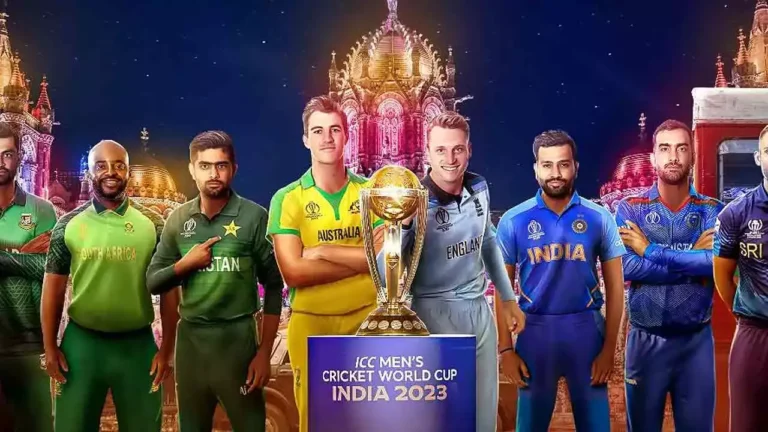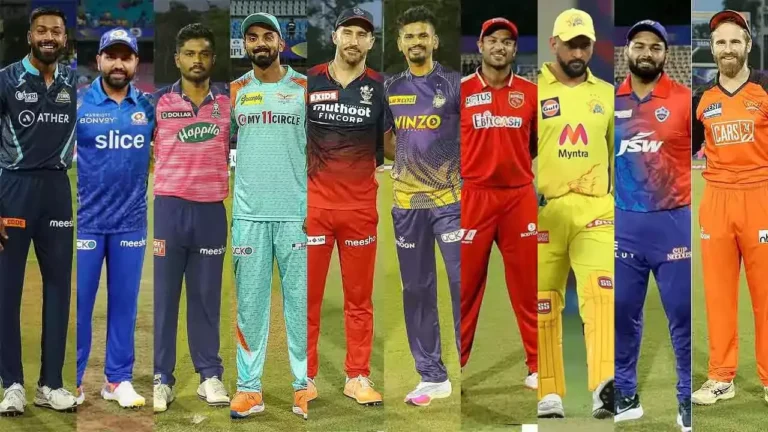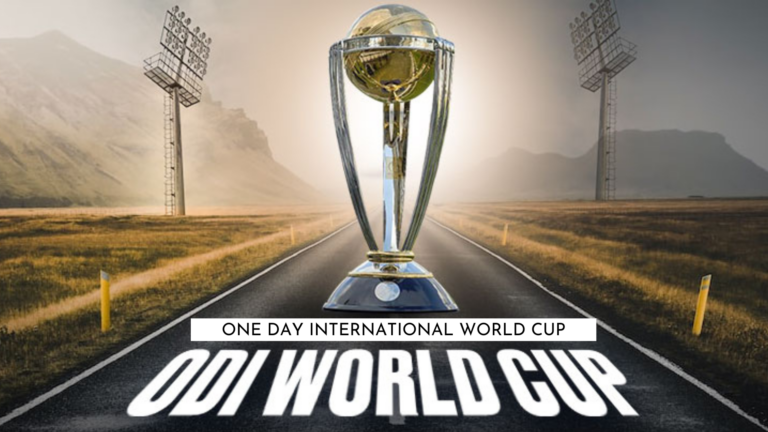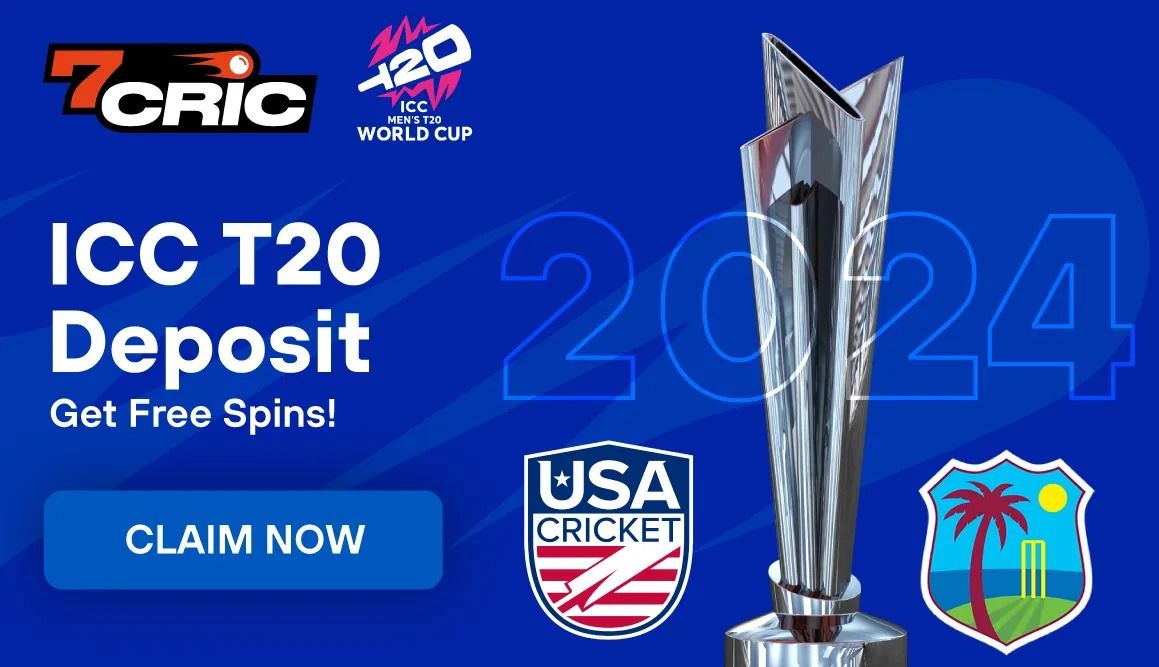The Colourful Journey of World Cup Jersey
From the introduction of colored jerseys in the World Series Cricket in 1978 to the technological advancements that influenced jersey materials and designs in the late 90s, the World Cup jersey has evolved significantly.
This article traces the history and evolution of World Cup ODI jersey, highlighting the story behind the kits, key milestones and developments over the years.
Claim up to ₹15,000 Welcome Bonus Now
Claim up to ₹15,000 Welcome Bonus Now
- Fastest Indian Rupees Withdrawals
- The Biggest Bonuses in India
- Available in four different Indian languages
How World Cup Jersey Evolve From Time to Time: Through History of the World Cup ODI Jersey
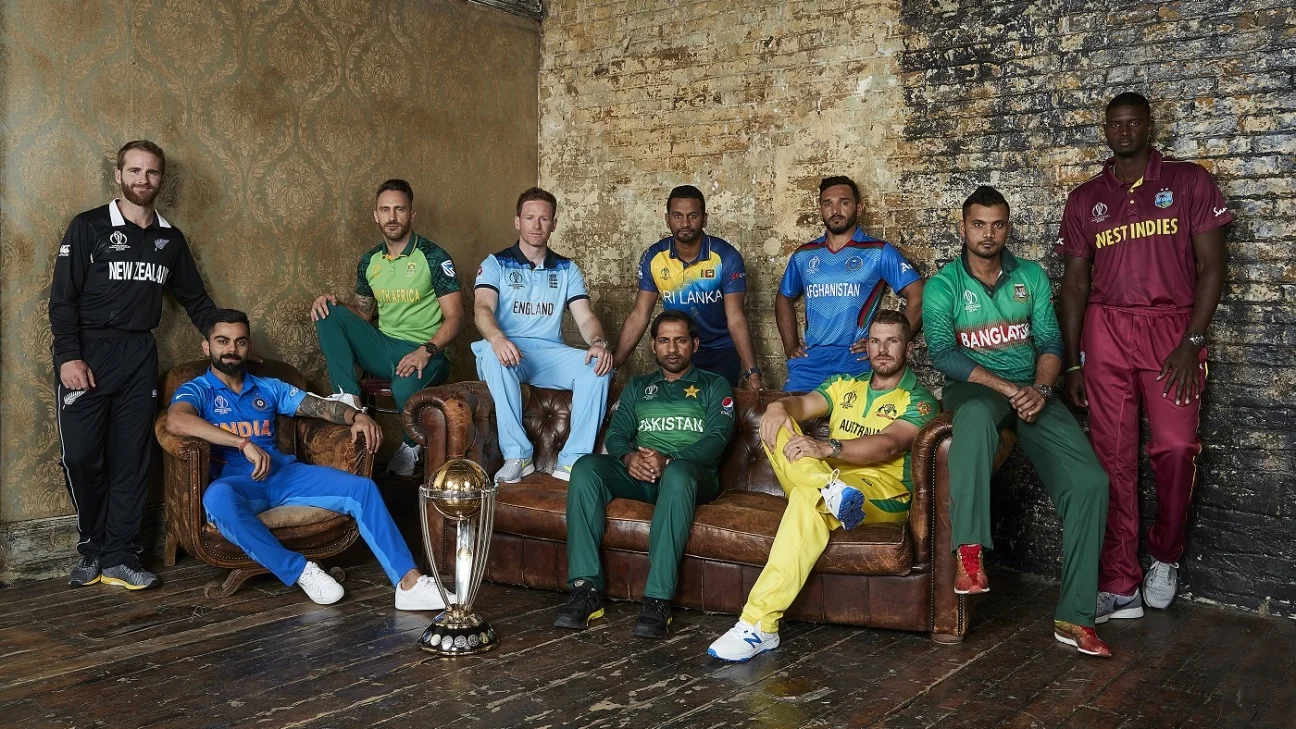
In the world of cricket, the evolution of jerseys has mirrored the transformations the sport itself has undergone since its inception. Initially, cricket was played in traditional white outfits, a practice that persisted until the late 1970s.
The shift to colored jerseys marked a significant turn in the One Day Internationals (ODIs), introducing a vibrant aspect to the game and allowing teams to forge distinct identities through their kits.
The journey of cricket jerseys is not just a matter of fashion or aesthetics; it is closely tied to the developments and changes in the game itself.
The Inception Era (1975-1987)
During the inception era of cricket, spanning from 1975 to 1987, the sport was characterized by a strong adherence to tradition, notably reflected in the attire of the players.
The traditional white cricket outfits were not just a uniform but symbolized the game’s rich history and the classic elegance associated with the sport during that period.
In 1983, the cricket landscape was still very much rooted in tradition, a fact clearly illustrated during the World Cup held that year.
Teams competed in white kits, not in specific World Cup jersey, and the matches were structured around 60-over innings, a format that was prevalent at the time.
This World Cup was a significant event that showcased the classic style of cricket before the advent of colored ODI jerseys. Like what this England’s World Cup jersey showes:
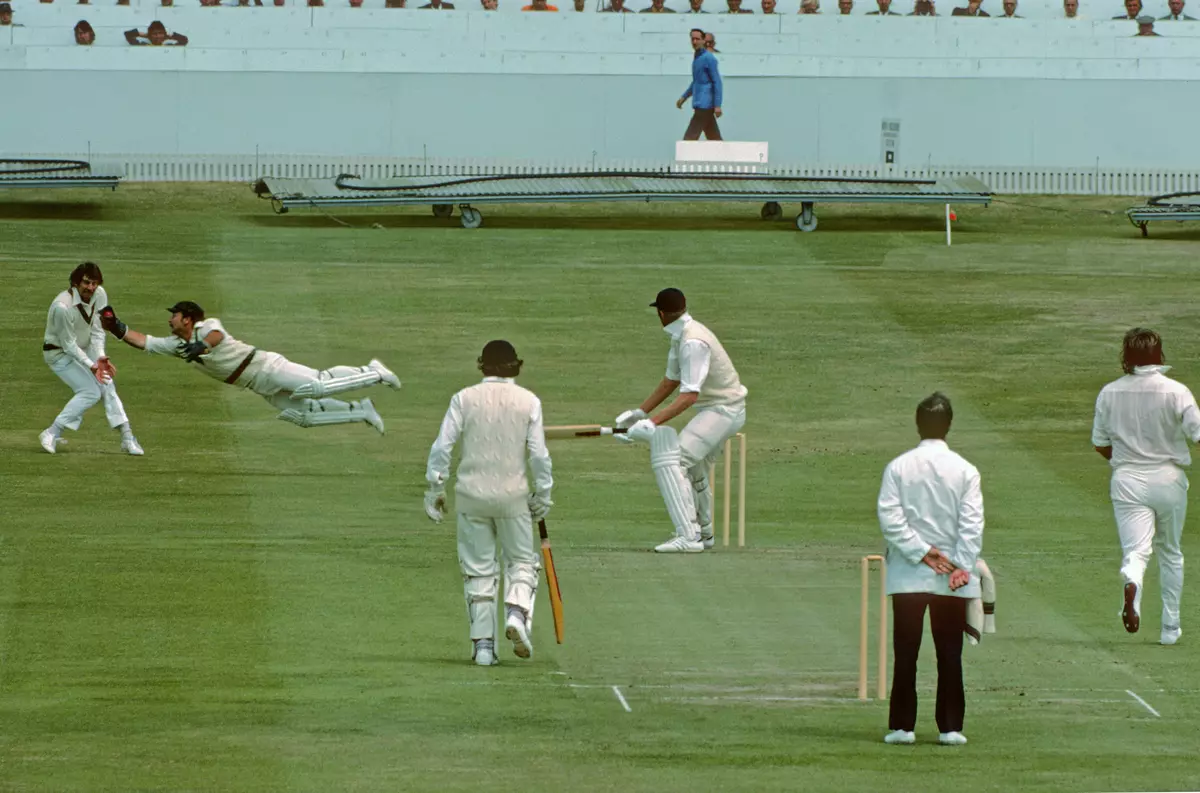
The year 1975 marked a significant milestone in cricket history, witnessing the organization of the first-ever Cricket World Cup. This event laid the foundation for the modern, competitive cricket landscape we are familiar with today.
A decade later, in 1985, the cricketing world saw the introduction of the World Championship of Cricket, further establishing the sport as a global competitive fixture.
This period solidified the importance and prestige associated with the World Cup jersey, setting the stage for the evolution that would take place in the years to come.
A Confluence of Tradition and Technology (Late 90’s)
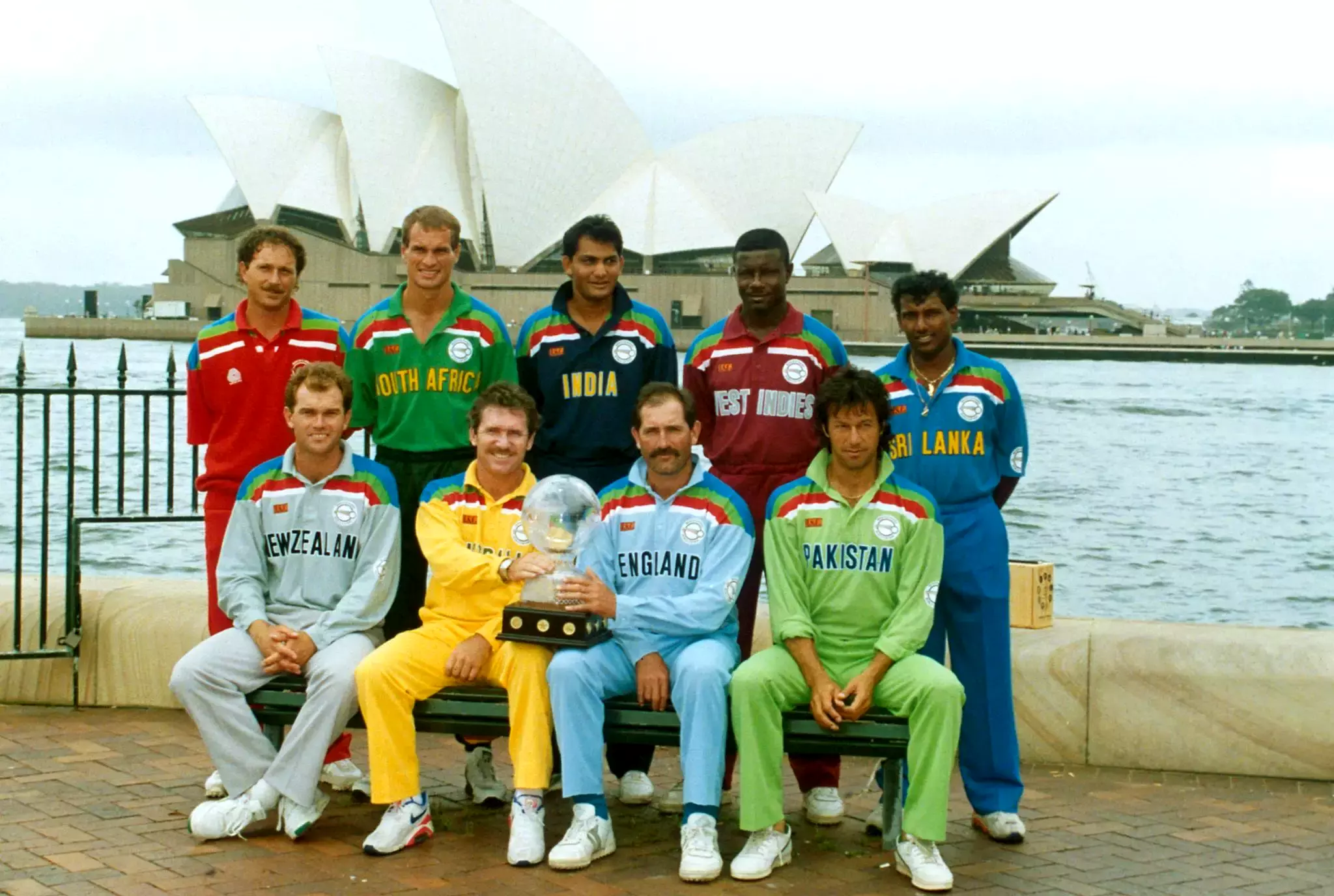
In 1978, the cricket world witnessed a seminal shift with the introduction of colored jerseys, a transition that gained prominence in the 1992 World Cup, which fully embraced this change, marking a departure from traditional white kits and heralding a more vibrant, dynamic era in the sport.
This shift, kick-started by a historic day-night match, not only ushered in the age of playing under lights but also signified a bold step towards modernity, turning the World Cup jersey into a symbol of innovation and a canvas reflecting each team’s identity.
By the late 90s, as ODI cricket’s popularity surged, technological advancements began influencing not only the design and material of the ODI jersey but also the very fabric of the game, facilitating precision in decision-making with the advent of the third umpire in 1992 and later, the Decision Review System in 2008.
These developments, enhancing accuracy and fairness on the field, paralleled innovations in broadcasting that expanded cricket’s global reach and improved the viewing experience, with enriched camera angles and graphics offering a more immersive encounter for fans.
The journey of the World Cup jersey, with the 1992 edition being a pivotal milestone, epitomizes this blend of tradition and modernity, continuing to shape the sport’s narrative and paving the way for its future trajectory.
The Patriot Canvas (Early 2000s)
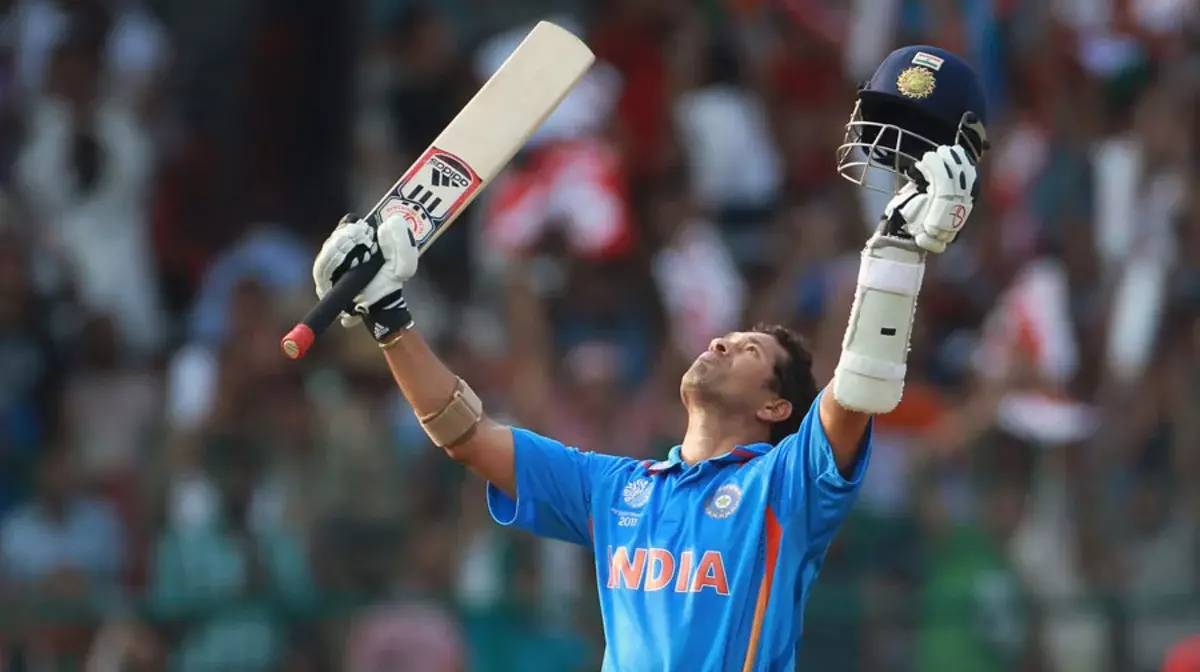
In the early 2000s, the design of the World Cup jersey began to reflect more than just the team’s colors; it became a canvas to showcase each nation’s heritage and identity.
The jerseys were adorned with intricate designs and motifs that resonated with the cultural significance and historical narratives of the respective countries.
This period marked a shift towards a more personalized approach to World Cup jersey design, allowing teams to infuse a sense of patriotism and pride into their attire.
Simultaneously, the early 2000s saw substantial changes in the rules governing ODI cricket, particularly in the number of overs per innings and fielding restrictions.
These alterations were aimed at making the game more dynamic and viewer-friendly, fostering a balance between the batting and bowling aspects of the game.
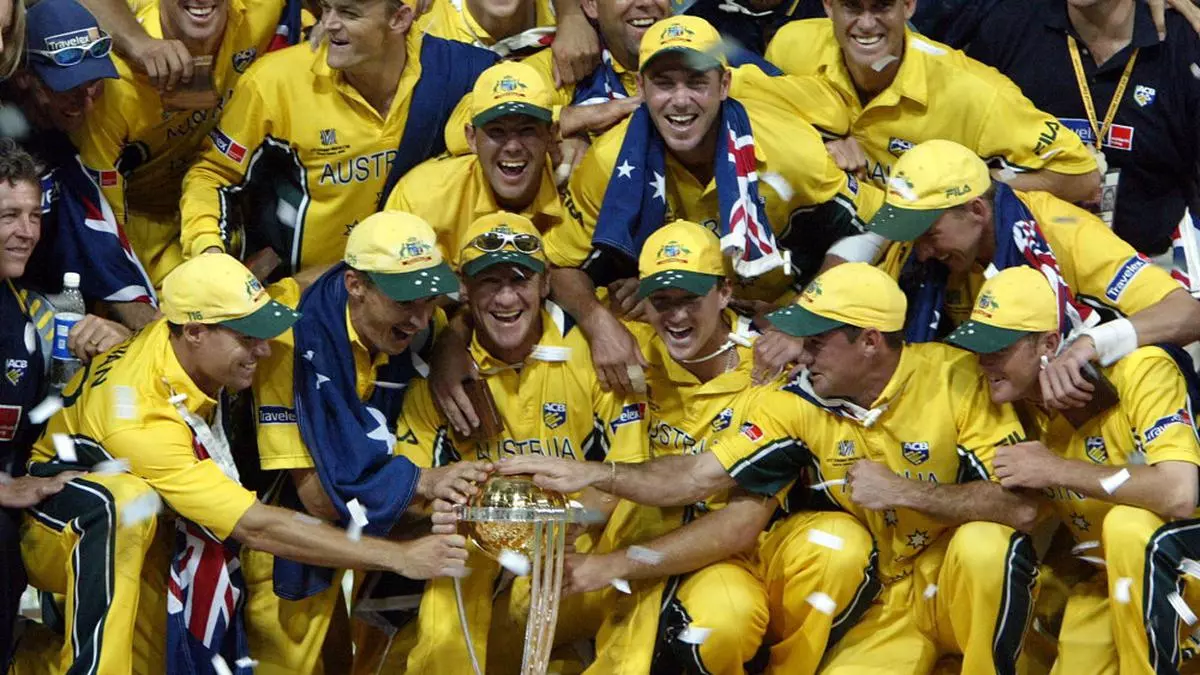
Furthermore, 2005 marked the introduction of the Powerplay, a strategic element that allowed teams to impose fielding restrictions for a certain number of overs, adding a new layer of strategy and excitement to the game.
This innovation was a significant step in the continuous evolution of ODI cricket, offering teams an opportunity to employ new tactics and strategies, thereby enhancing the competitive nature of the sport.
Overall, this period signified a time of change and innovation, both in the design of the ODI jersey and the rules of the game, fostering a richer and more engaging cricketing experience for players and fans alike.
However, the mid-2000s marked a significant shift in the design of the ODI jersey, with a greater emphasis on individual recognition.
This was primarily achieved through the addition of names and numbers to the jerseys, a feature that allowed players to carve out their unique identity while still being a part of a cohesive unit.
This period saw the World Cup jersey becoming a canvas that portrayed both the individual and the team, fostering a sense of unity and personal pride.
During this time, ODI cricket witnessed several iconic moments that have since become etched in the annals of cricket history.
One such moment was the thrilling encounter between South Africa and Australia in 2006, where South Africa successfully chased down a record-breaking target of 434 runs.
This match, held at the Wanderers Stadium in Johannesburg, is often cited as one of the most memorable matches in ODI history, showcasing the pinnacle of individual brilliance and team collaboration.
Furthermore, this era underscored the perfect blend of individual recognition with team spirit. Players, through their distinct World Cup jerseys, were able to showcase their personal flair and style, while still embodying the spirit and unity of their respective teams.
This period, thus, marked a harmonious amalgamation of personal touch with team ethos, enhancing the appeal and dynamism of the sport.
Sustainable Fashion (2015)
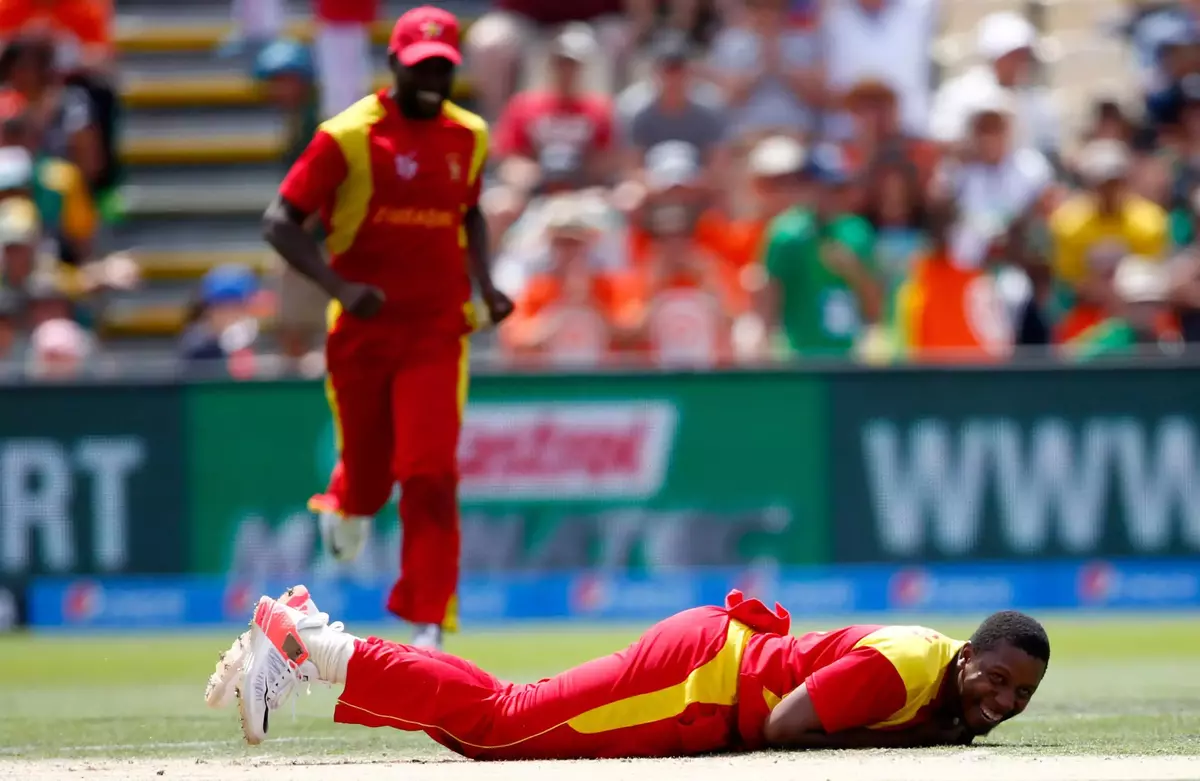
In 2015, the cricket fraternity took a significant step towards environmental conservation, with a notable focus on sustainable fashion.
This initiative was prominently seen in the production of the World Cup jerseys, where eco-friendly materials became a priority.
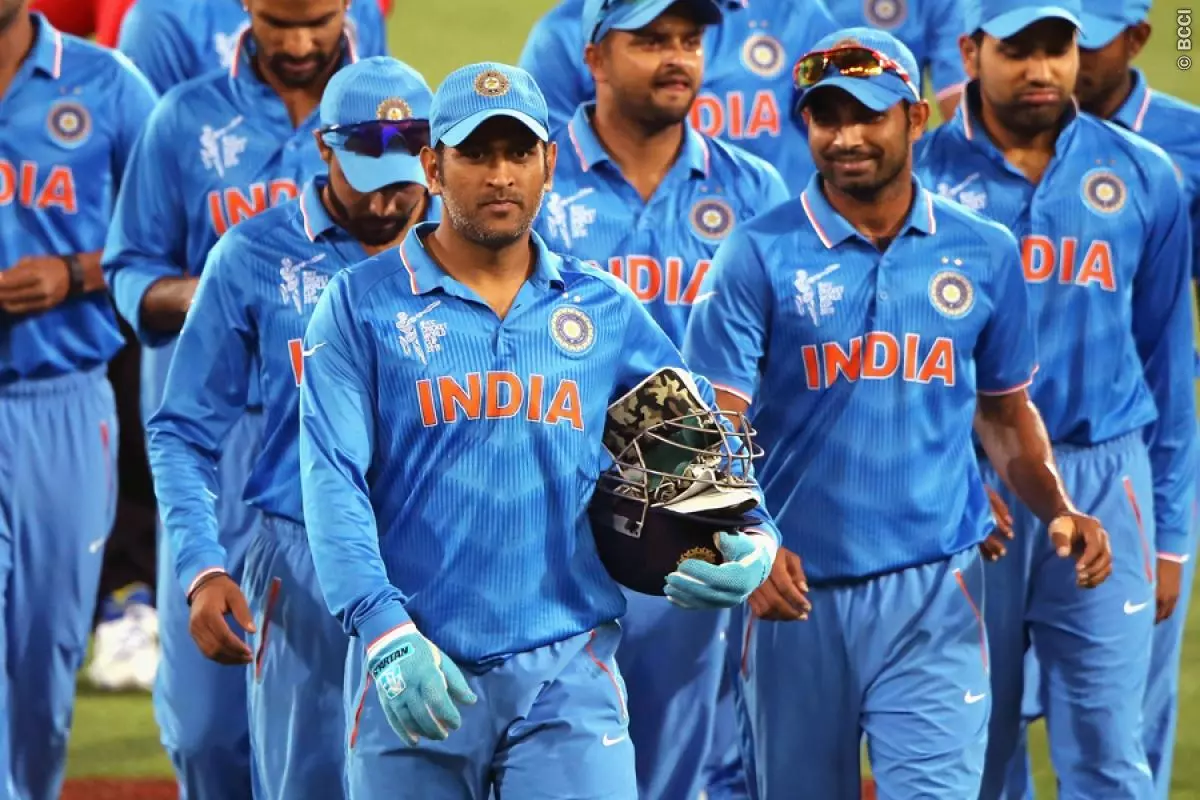
During this period, Team India introduced a new jersey for the ICC Cricket World Cup, which was made out of recycled plastic bottles, a move that underscored cricket’s commitment to environmental conservation.
This jersey, crafted with Nike’s innovative technology, not only facilitated optimal player comfort and movement but also represented a conscientious effort towards reducing environmental impact.
Each kit, comprising a jersey and bottoms, utilized an average of 33 recycled plastic bottles in its production, showcasing a harmonious blend of high-performance innovation with sustainability.
Furthermore, this World Cup jersey featured Nike Dri-FIT technology and a unique four-way stretch fabric, which was ideal for cricket, enhancing comfort for the players and allowing natural body movement within the kit.
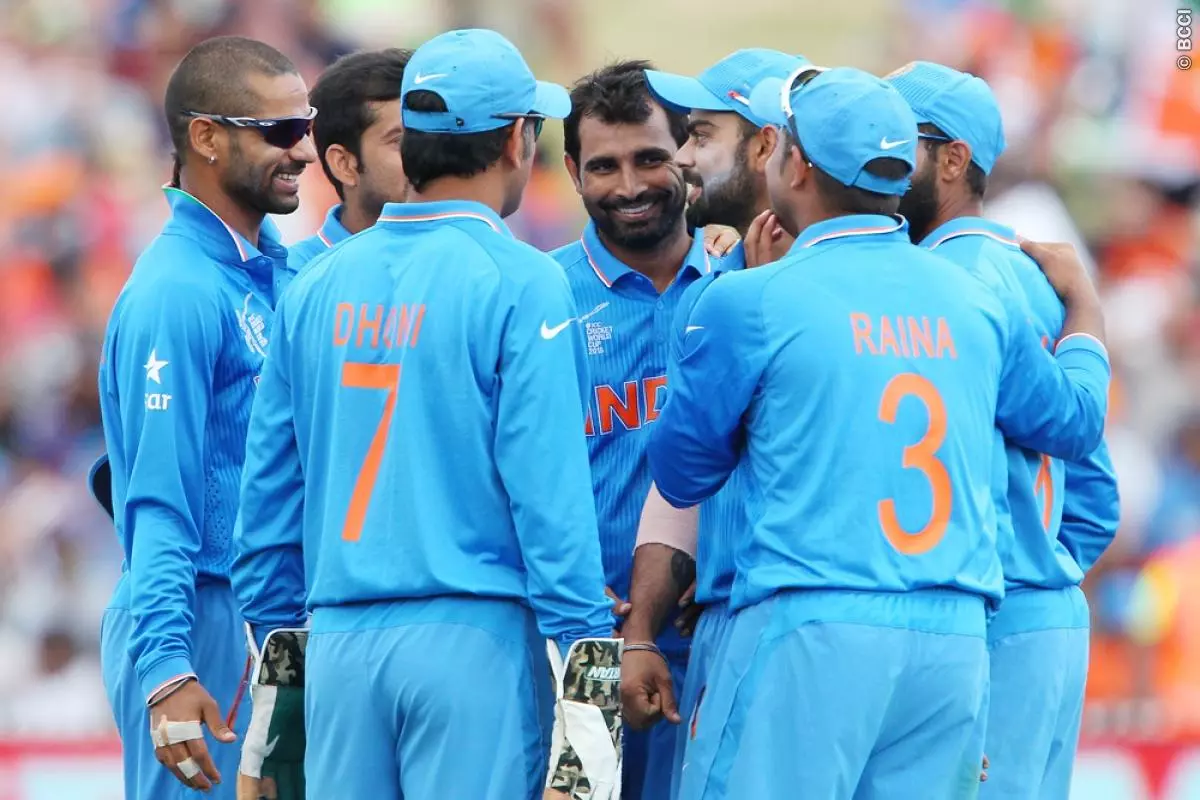
This initiative was well-received, with India’s ODI captain at the time, Mahendra Singh Dhoni, emphasizing the jersey’s light and comfortable nature, which helped minimize distractions on the field, a critical aspect in a game where minute details can influence the outcome significantly.
This move towards sustainable fashion in the production of the ODI jersey marked a significant milestone in cricket’s journey, highlighting the sport’s growing awareness and commitment to environmental conservation.
Modern Designs (2019)
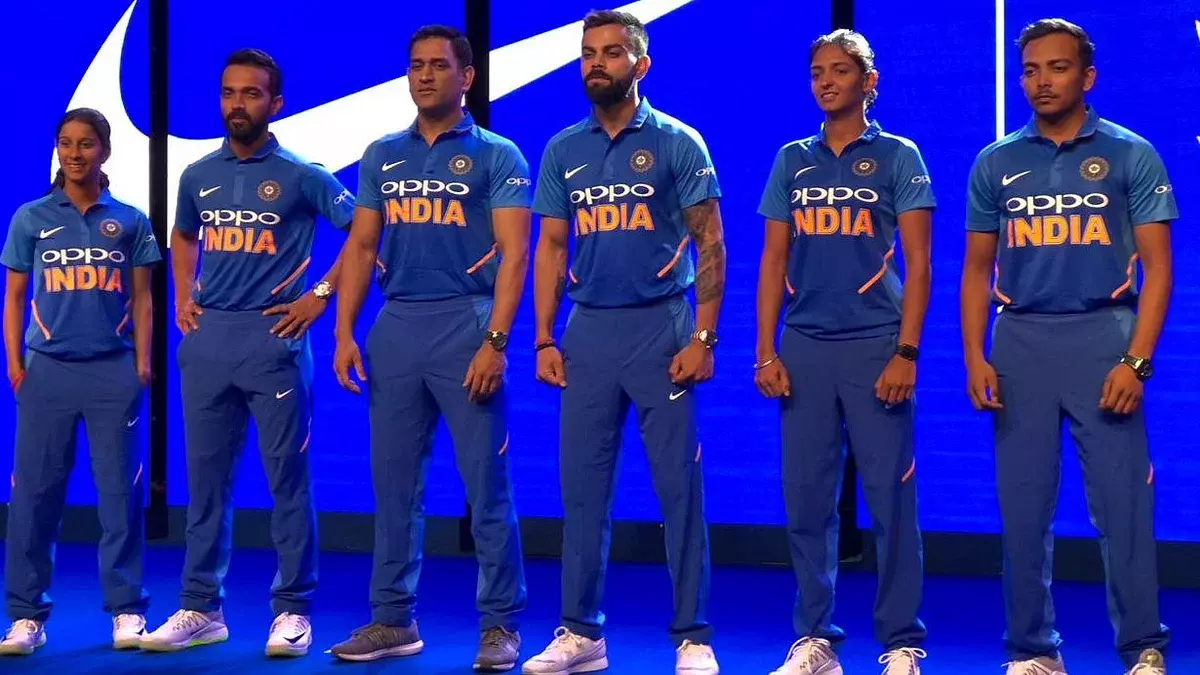
In 2019, the cricketing world witnessed a harmonious fusion of tradition and technology in the design of the World Cup jerseys.
The jerseys showcased a blend of contemporary fabric technology and sleek designs, representing the modern era of the sport.
During the ICC Cricket World Cup 2019, various teams unveiled jerseys that were not only aesthetically pleasing but also incorporated elements of their national heritage.
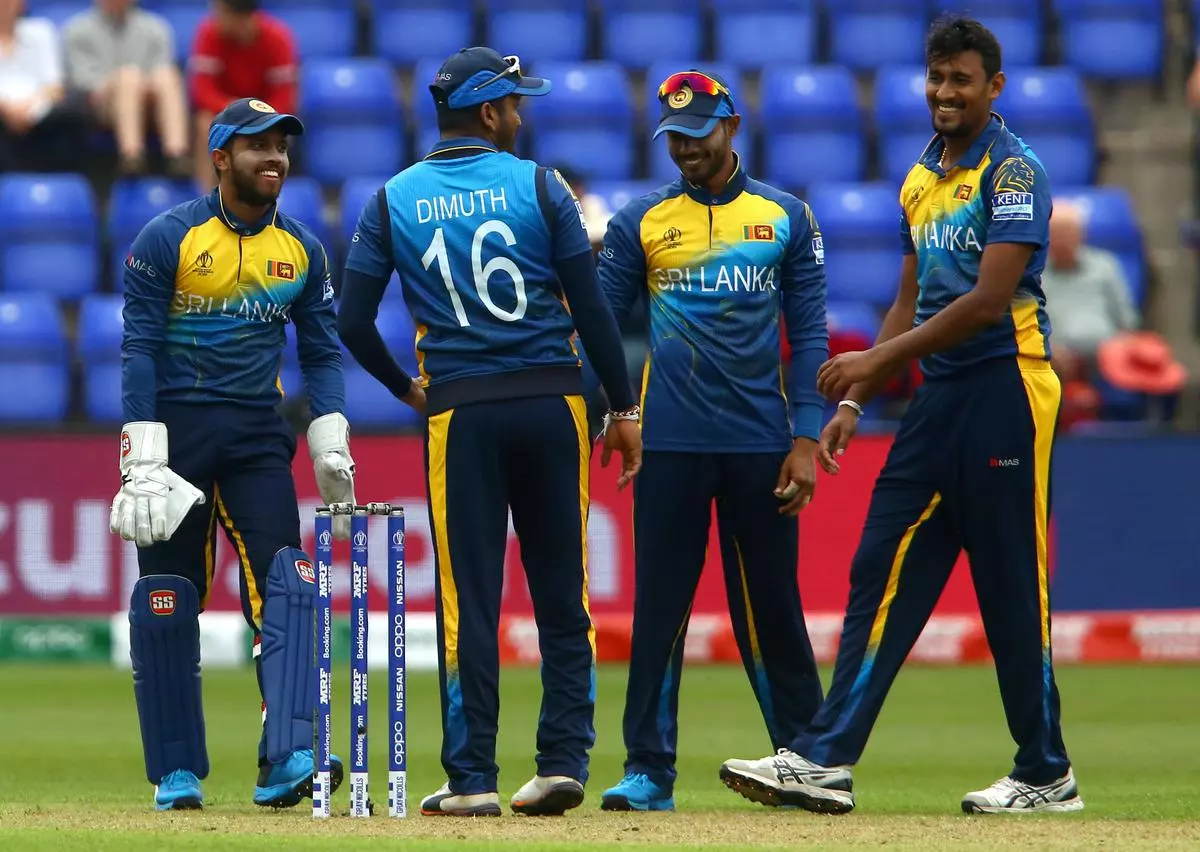
For instance, the Sri Lankan team’s jersey was made from recycled oceanic plastic collected from the country’s beaches, a move aimed at promoting the safety of aquatic animals.
This jersey even featured a turtle design, symbolizing their commitment to environmental conservation.
On the other hand, the Indian team’s jersey stirred mixed reactions from the fans. While some appreciated the elegant design with two shades of blue, others urged for a retro design inspired by the Australian team’s approach.
Despite the mixed reviews, the Australia World Cup jersey was noted for its elegance and modern appeal.

Furthermore, teams like Australia leaned towards retro designs, drawing inspiration from the jerseys worn during the 1987 World Cup, blending a sense of nostalgia with modern fabric technology.
However, this move faced criticism due to the perceived mismatch of color combinations used in the jersey.
Looking Ahead (2023 and Beyond)
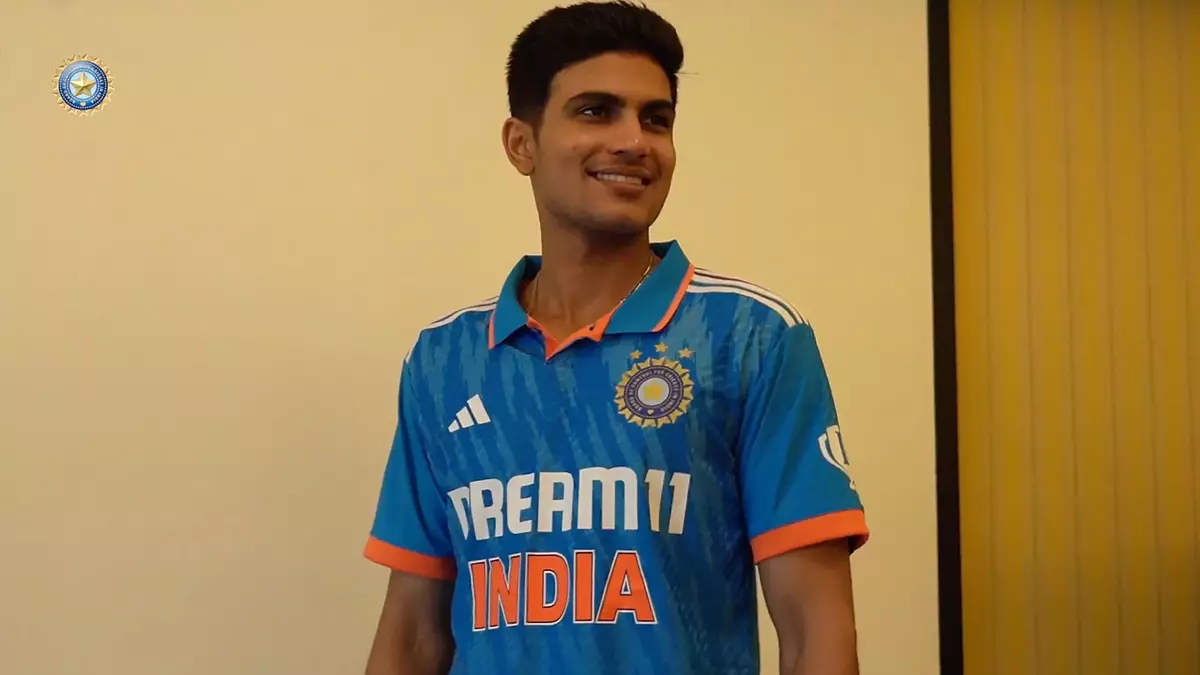
As we approach the upcoming ICC Cricket World Cup in 2023, the cricketing world anticipates a bright future for ODI cricket, characterized by the advent of new technologies and innovations.
The continuous evolution of Cricket World Cup jerseys is expected to blend tradition with modernity, offering a fresh yet rooted experience to both players and fans.
In the lead-up to the 2023 World Cup, teams have begun unveiling their new jerseys, showcasing a blend of traditional elements and modern fabric technology.
Pakistan, for instance, has revealed their “Star Nation Jersey” which draws inspiration from celestial bodies, with each star on the jersey representing excellence, ambition, and the brilliant shine of cricketing achievements.
This jersey aims to encapsulate Pakistan’s rich cricketing heritage and the luminous future that awaits, fostering a profound connection between the cricketing heroes and their dedicated fans.
On the other hand, New Zealand has also unveiled their new jersey for the tournament. The jersey, predominantly black, features a set of vertical lines, and was showcased by players such as Lockie Ferguson and Trent Boult.
This World Cup jersey is a proof to the modern designs that are expected to grace the fields during the World Cup, representing a harmonious blend of tradition and contemporary fashion.
As we look forward to the upcoming World Cup, expectations are high for the new batch of jerseys. They are anticipated to embody a fusion of modern technology with traditional elements, offering a fresh perspective while retaining the essence of the sport’s rich history.
Final Thought of World Cup Jersey
The evolution of ODI cricket is reflected in the transformation of the World Cup jersey, which has shifted from plain white uniforms to colorful, technologically advanced kits representing the heritage and fervor of nations and their cricket legends.
These jerseys not only narrate the sport’s rich history but have also become a symbol of the collective enthusiasm and commitment that propels the spirit of ODI cricket.
As we anticipate the upcoming tournament and the World Cup jersey from each team revealed, we eagerly await the new narratives and champions that will arise, adorned in the modern ODI jersey, marking new milestones in cricket history.
Claim up to ₹15,000 Welcome Bonus Now
Claim up to ₹15,000 Welcome Bonus Now
- Easy Sign-Up and Deposits
- The Biggest Bonuses in India
- Available in four different Indian languages
FAQ - All You Need To Know About World Cup Jersey
What is World Cup Jersey?
The World Cup Jersey refers to the official kit or uniform that cricket teams wear during the Cricket World Cup. These jerseys have evolved significantly over the years, from the traditional white outfits used in the early years of the tournament to the vibrant, technologically advanced kits seen today.
What was notable about the 2015 India World Cup jersey?
The 2015 India World Cup jersey was remarkable for its eco-friendly initiative. It was made from recycled plastic bottles, showcasing cricket's commitment to environmental conservation without compromising on player comfort and kit performance. This initiative was facilitated by Nike's innovative technology.



